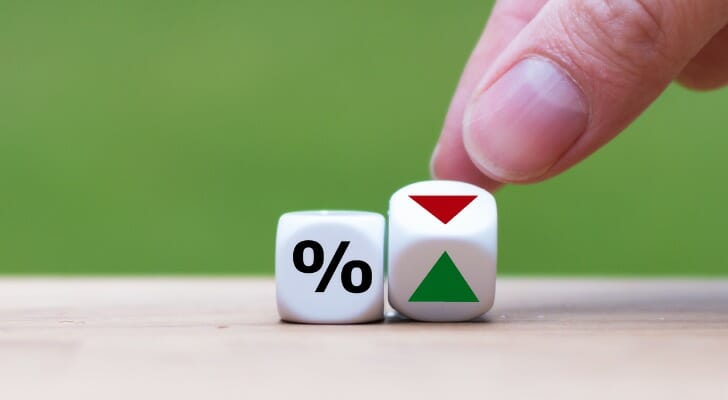Bonds are fixed-income investments that can provide some diversification and stability to your investment portfolio. That’s because they are fairly low-risk due to their inherent backing of the government, a corporation or another official entity. More specifically, a callable bond is a bond that allows the issuer to redeem it before it reaches maturity. Callable bonds are riskier than non-redeemable bonds, but they can potentially enhance a diversified investment portfolio.
Consider working with a financial advisor as you seek to diversify the investments in your portfolio.
What Is a Callable Bond?
A bond is a long-term contract between the issuer of and the investor in the bond. Bonds have long been a go-to investment for more conservative investors who don’t want to take the level of risk inherent in the stock market.
In the corporate world, the issuer is a corporation. Corporations issue bonds to raise money to finance their many operations. Investors in those bonds supply that money, and in return, receive interest payments and their principal at maturity. The same is true of municipal bonds, though they are instead offered by government entities.
Most bonds have what’s called a coupon rate, which is the interest rate set when the bond was issued. The coupon payment on a bond is the coupon rate times par value, which is the stated face value of the bond. During the bond’s lifetime, its issuer pays the coupon payment to the investor in the bond on a typically semi-annual basis.
Some bonds have what’s termed a call provision, and these are what’s known as callable bonds. By instituting a call provision, the bond issuer can “call back,” or redeem, the bond before maturity. However, a call provision usually also contains a call premium, an extra amount the issuer has to pay investors because they are calling the bond early and thus depriving the investor of future coupon payments.
The opposite of a callable bond is a non-redeemable bond. As their name suggests, the bond issuer cannot call back these bonds ahead of their maturity date. These bonds provide two income streams to investors: They pay them the coupon rate every six months until maturity and also return the par value to them at maturity.
Alternatively, a callable bond may pay a higher coupon rate than a non-redeemable bond. Most bonds, however, are not callable until several years down the road. These bonds have a deferred call provision and afford the investor some early call protection.
The maturity dates on bonds are usually 15 to 30 years. This is the latest time at which the par value must be returned to the investor. Again, the issuer of a non-redeemable bond cannot redeem the bond before it matures. Doing so would entail paying back the investor the principal and halting further coupon payments.
Risks of Callable Bonds

Companies often call their bonds when interest rates fall. If they redeem the existing higher coupon rate bonds and retire the debt, they can then finance their operations using bonds issued at the new lower interest rate.
This is a good financial move for the corporation or municipality but not the investor, who will then have to replace that investment with bonds at the new and lower interest rate. That doesn’t earn them as much return on their investment since the coupon rate, and resulting interest payments, are lower than they were for their original investment. This is called reinvestment risk.
However, if interest rates stay the same or trend higher, investors have no reinvestment rate risk since callable bond issuers won’t call their bonds in those interest rate environments. The key to bond investing is realizing that interest rates can be capricious and there is no guarantee if rates will fall, rise and stay the same. Therefore, the risk of a callable bond is greater than that of a non-callable bond.
If you own a non-callable bond, the risk is not as great. A rule of investing is to remember that with greater risk comes the possibility of greater reward. Callable bonds represent higher rates of return than non-callable bonds.
Example of How a Callable Bond Works
Here’s a hypothetical case that illustrates reinvestment rate risk with a callable bond. Suppose that three years ago a corporation sold a 15-year bond issue with a 3% coupon rate, a call provision and a $25 call premium. Now, three years later, interest rates have dropped to rock bottom levels, so the corporation calls the bonds on the call date and repays the bondholders their par value.
In this case, the bondholders have received only three years of coupon payments even though the corporation repaid their par value, plus $25 as a call premium. The bondholders now have to find another investment, but interest rates have dropped and they can only reinvest in bonds issued with 1% coupons. This is good for the bond issuer since the company can now finance its operation with 1% debt instead of 3% debt. It was not so good for bondholders who now can’t find an investment with a 3% coupon rate since interest rates have dropped to 1%.
If interest rates fall and the likelihood of the corporation calling the bonds increases, callable bonds are also limited on their upside price appreciation. Investors have to ask themselves if a possible higher coupon rate or a premium par value when the bonds are called is worth the reinvestment risk they may sustain.
Should You Invest in Callable Bonds?

If interest rates are expected to stay the same or go up, then callable bonds may have a place in an investor’s diversified portfolio. Callable bonds represent a gamble that interest rates will not fall. If your gamble pays off, then you have enjoyed higher than normal interest rates during the life of the bond. If your gamble does not pay off, you may have benefited in the short run, but in the long run, you may still face reinvestment rate risk if the bonds are called.
Despite this, callable bonds do not always get called. In that case, investors can enjoy a higher rate of return for the full term of their bond investment since companies have to pay a higher coupon rate during their life to attract investors to buy the bond issue. Callable bonds do not sell as easily as non-callable bonds due to the inherent risk of the call option being exercised.
Bottom Line
It’s always a good thing to diversify your investment portfolio. If you do include callable bonds as part of your fixed-income investment, you may enhance the returns of your investment portfolio. In a rising interest rate environment, callable bonds may be considered a worthwhile investment asset.
Investing Tips
- Deciding what types of bonds to include in your investment portfolio can be challenging. A financial advisor can offer valuable help with this, though. Finding a qualified financial advisor doesn’t have to be hard. SmartAsset’s free tool matches you with up to three financial advisors who serve your area, and you can interview your advisor matches at no cost to decide which one is right for you. If you’re ready to find an advisor who can help you achieve your financial goals, get started now.
- SmartAsset’s asset allocation calculator will help you evaluate what different types of investments can offer you.
Photo credit: ©iStock.com/PashaIgnatov, ©iStock.com/Fokusiert, ©iStock.com/HRAUN
